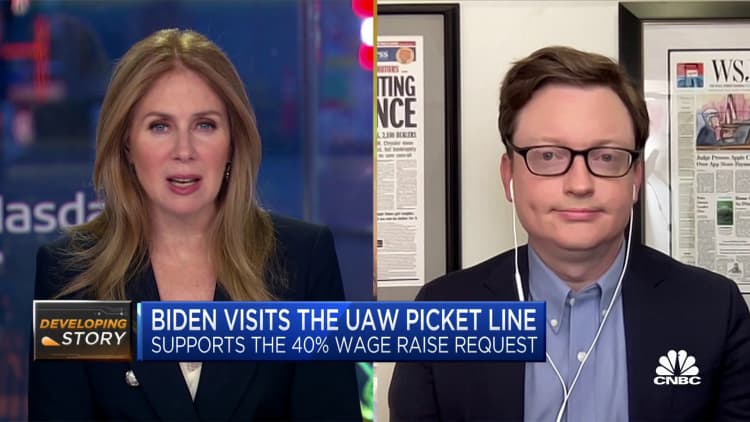The job market remains strong despite gradual cooling from pandemic-era highs, according to labor economists — but workers don’t seem to share that outlook.
Employee confidence fell last month to its lowest level since 2016, according to Glassdoor data. About 46% of workers reported a positive six-month outlook for their employers, down from 54% from a year ago.
Meanwhile, the ZipRecruiter Job Seeker Confidence index was down six points in the second quarter to its lowest point since the beginning of 2022.
More from Personal Finance:
Supreme Court case may gut the CFPB
Student loan bills resume for 40 million Americans
Here are the top 10 highest-paying college majors
The juxtaposition of a resilient labor market but deteriorating sentiment is likely due to financial stress among workers and the fact that the recent baseline was a scorching-hot job market in 2021 and 2022, economists said.
“Overall, workers still have more leverage and more job security than before the pandemic,” said Julia Pollak, chief economist at ZipRecruiter.
“I think job seekers comparing this environment to 2021 and 2022 do feel worse off,” she added. “It’s taking more effort to find a job, and jobseekers are searching under greater financial strain now.”
The job market is stable but not ‘gangbusters’
Several metrics — including job openings, quits, layoffs and the unemployment rate — suggest the labor market is healthy, economists said.
Daniel Zhao, lead economist at Glassdoor, said it is “softer but steady.”
“If you look at these indicators in aggregate, they point to a labor market that isn’t necessarily going gangbusters, but in a fairly stable state,” Zhao said.
Broadly, the indicators are largely in line or even stronger than pre-pandemic, a time when unemployment was low, people were joining the labor force, and gender and racial employment gaps were narrowing, Pollak said.
I think a lot of folks are comparing the labor market today to a year or two ago when things were hot. But of course, there were also problems with the economy of 2021 and 2022.
Daniel Zhao
lead economist at Glassdoor
“That’s a very good thing,” she said.
The quits rate — a barometer of workers’ willingness or ability to leave a job — was 2.3% in August, the same as February 2020, the U.S. Department of Labor reported Tuesday.
It was unchanged from July, though down from a 3% peak in April 2022 when a record number of workers were quitting, in what became known as the great resignation.
Likewise, the hiring rate is slightly below but roughly similar to its level in February 2020.
Layoffs are still 15% lower than before the pandemic and job openings (a gauge of employers’ demand for workers) are 37% higher, according to Labor Department data.
The problems with the 2021, 2022 job markets
In fact, job openings rose significantly, by 690,000, to 9.6 million in August, the Labor Department reported Tuesday.
However, there are reasons to think that increase is anomalous, economists said. For one, the data series is generally volatile, subject to big ups and downs from month to month. And the broader trend is clear: Job openings, along with quits and hires, have cooled from their pandemic-era peaks, economists said.
“I think a lot of folks are comparing the labor market today to a year or two ago when things were hot,” Zhao said. “But of course, there were also problems with the economy of 2021 and 2022.”

Among the problems: Inflation touched its highest level since 1981, eroding the big raises workers had been getting due to lost purchasing power. Also, certain sectors like technology hired overzealously, Zhao said, leading big tech firms to lay off tens of thousands.
A labor market that runs too hot is unsustainable, as job turnover and wage growth get so high that they feed into inflation, Zhao said. (It’s unclear the extent to which this may have occurred in the recent inflationary bout.)
“The labor market that we’re getting today is in a healthier spot, even though for many workers it isn’t quite as easy to find a job or get a raise,” Zhao said.
Of course, it’s unclear if — and the extent to which — the labor market will continue cooling, economists said. In addition to higher interest rates, there are economic headwinds such as continued strikes by auto workers, high oil prices and another government-shutdown threat looming in November, Zhao said.
Read the full article here












Leave a Reply